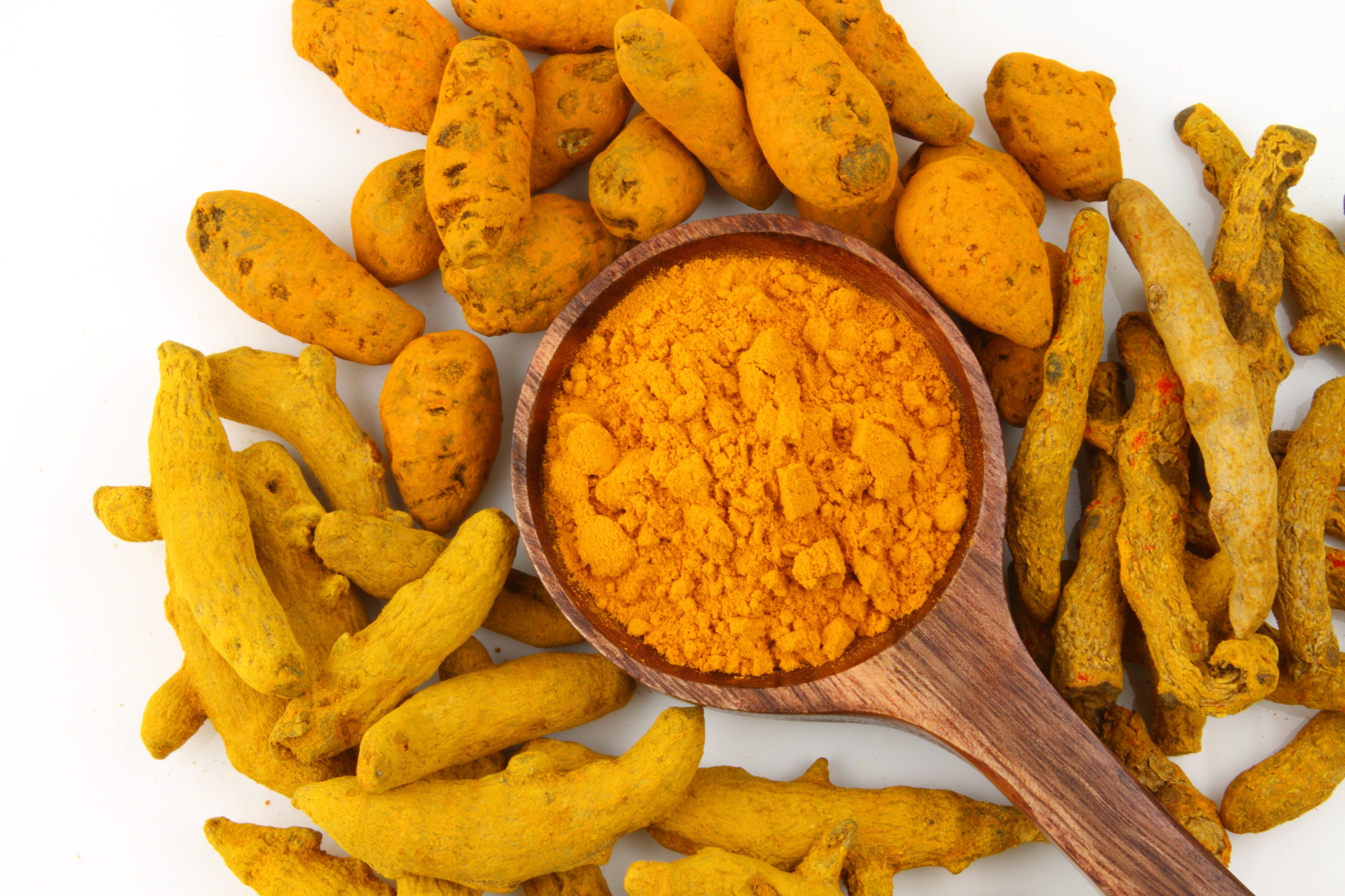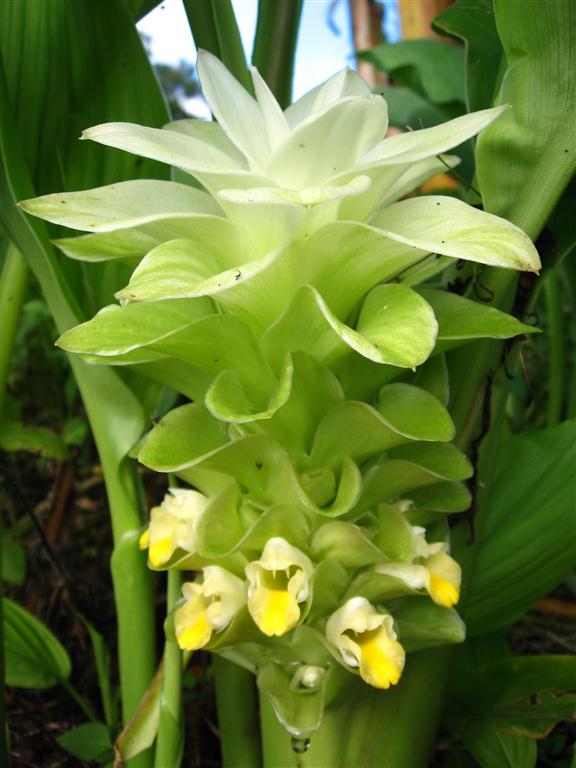
Curcumin, the active ingredient found in turmeric, is a power antioxidant. Antioxidants scavenge molecules in the body known as free radicals, which damage cell membranes, tamper with DNA, and even cause cell death. Antioxidants can fight free radicals and may reduce or even help prevent some of the damage they cause.
In addition, curcumin lowers the levels of two enzymes in the body that cause inflammation. It also stops platelets from clumping together to form blood clots.
Plant Description
Turmeric is a perennial plant that grows 5 to 6 feet high in the tropical regions of Southern Asia. It is a relative of ginger and has trumpet-shaped, dull yellow flowers. Its roots are bulbs that also produce rhizomes, which then produce stems and roots for new plants. Turmeric is fragrant and has a bitter, somewhat sharp taste.

Medicinal Uses
The roots, or rhizomes and bulbs, are used in medicine and food. They are generally boiled and then dried, turning into the familiar yellow powder.
Curcumin stimulates the gallbladder to produce bile, which some people think may help improve digestion. The German Commission E, which determines which herbs can be safely prescribed in Germany, has approved turmeric for digestive problems.
Early studies suggested that turmeric may help prevent atherosclerosis, the buildup of plaque that can block arteries and lead to heart attack or stroke. In animal studies, an extract of turmeric lowered cholesterol levels and kept LDL "bad" cholesterol from buildin up in blood vessels. Because it stops platelets from clumping together, turmeric may also prevent blood clots from building up along the walls of arteries. But a double-blind, placebo-controlled study found that taking curcumin, the active ingredient in turmeric, at a dose of up to 4 g per day did not improve cholesterol levels.
How to Take It
- Cut root: 1.5-3 grams per day
- Dried, powdered root: 1-3 grams per day
- Standardized powder (curcumin): 400-600 mg, three times per day

Possible Interactions
According to the information found on Penn State Hershey:
If you are being treated with any of the following medications, you should not use turmeric or curcumin in medicinal forms without first talking to your health care provider.
Blood-thinning Medications -- Turmeric may make the effects of these drugs stronger, raising the risk of bleeding. Blood-thinners include warfarin (Coumadin), clopidogrel (Plavix), and aspirin, among others.
Drugs that reduce stomach acid -- Turmeric may interfere with the action of these drugs, increasing the production of stomach acid:
- Cimetidine (Tagamet)
- Famotidine (Pepcid)
- Ranitidine (Zantac)
- Esomeprazole (Nexium)
- Omeprazole
- Lansoprazole (Prevacid)
Diabetes Medications -- Turmeric may make the effects of these drugs stronger, increasing the risk of hypoglycemia (low blood sugar).
Recipes



No comments:
Post a Comment